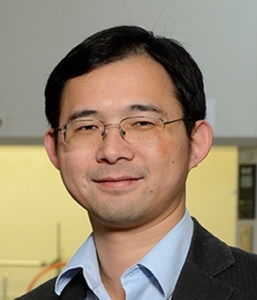Apr 5 2018
Scientists from the Johns Hopkins have collaborated with researchers from three other universities to combine nearly eight different metals into single, uniformly mixed nanoparticles.
 Chao Wang, an assistant professor of chemical and biomolecular engineering at Johns Hopkins played a key role in developing the new nanoparticles. (Image credit: Will Kirk/Johns Hopkins University)
Chao Wang, an assistant professor of chemical and biomolecular engineering at Johns Hopkins played a key role in developing the new nanoparticles. (Image credit: Will Kirk/Johns Hopkins University)
According to their study reported in the cover article of the March 30, 2018, issue of the Science journal, the new technology allowed the researchers to combine multiple metals, including those not generally considered to be capable of mixing. The researchers stated that this process has resulted in the development of innovative and stable nanoparticles with useful applications in the energy and chemical industries.
Several industrial products such as plastics and fertilizers are synthesized with the help of catalysts, substances that accelerate chemical reactions. In such processes, metallic alloy nanoparticles have a critical role to play; however, to date, only a small set of such particles were available due to limitations that emerge while combining extremely different metals to make homogeneous alloys or combinations of metals. The problem tends to be more difficult when downsizing to the nanoscale needed for catalytic applications.
The new technique involves using shock waves to heat the metals to exceptionally high temperatures, that is, equal to or more than 2000 K, at extremely rapid rates, heating as well as cooling them within a few milliseconds. Small droplets of liquid solutions are formed by melting the metals together at higher temperatures. The droplets are then rapidly cooled to form homogeneous nanoparticles. The new materials, called high-entropy-alloy nanoparticles, are considered to have a wide range of applications as catalysts in industry-relevant chemical reactions, with the ability to enhance energy efficiency in the production process and minimize the production costs.
“This method enables new combinations of metals that do not exist in nature and do not otherwise go together,” stated Chao Wang, one of the co-authors of the study, who is a Johns Hopkins Whiting School of Engineering assistant professor of chemical and biomolecular engineering. Wang along with his research team developed a five-metal catalyst based on these high-entropy-alloy nanoparticles and established its superior catalytic performance during selective oxidation of ammonia to nitrogen oxide—a reaction used in the chemical industry to synthesize nitric acid, a key chemical in the extensive production of fertilizers and other products.
The study carried out in Wang’s lab was part of a partnership with collaborators from MIT, the University of Illinois at Chicago, and the University of Maryland, College Park. The process enables a broad range of metals to be uniformly combined, and also enables the alloys to be produced in the form of tiny particles required for the catalytic process. Conventional techniques, which are dependent on comparatively low-temperature and gradual heating and cooling methods, usually lead to clumps of metal in the place of separate particles.
In order to develop their nanoparticles, the researchers loaded metal salts—synthesized by the interaction between a metal and acids such as sulfuric acid and hydrochloric acid—onto carbon nanofibers, a conductive supporting material that is commonly used in catalysis. An electrical pulse similar to a short circuit was used to activate the metal salts with heat, and the thermodynamic and kinetic properties of the mixtures were controlled by adjusting the cooling rate.
Unprecedented reaction pathways and catalytic mechanisms are permitted by synergistic effects among the dissimilar metals. Apart from the production of nitric acid, the team is investigating the use of the nanoparticles in reactions such as the elimination of nitrogen oxide from vehicle exhaust.
This study did not receive direct funding support. The Johns Hopkins team acknowledges internal support through the university’s Catalyst and Discovery Awards. The National Science Foundation (NSF) supported the acquisition of equipment through grant DMR-0959470. Additional support in the form of an Office of Naval Research Multidisciplinary University Research Initiative grant, a Department of Defense National Defense Science and Engineering Graduate Fellowship, and NSF grants CMMI-1619743 and DMR 1410636 is acknowledged by the authors.